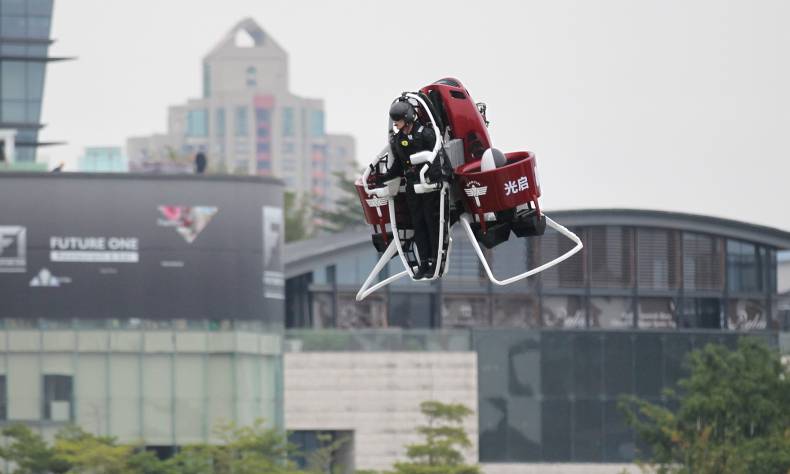
Jetpacks to Take Flight in China?
For any fan of the science-fiction genre, the jetpack trope is as recognizable as flying cars or phasers set to stun. In movies and comic books, the hero-protagonist simply straps on a rather conveniently-sized backpack and blasts off into the wild blue yonder to save the day. But the reality of the situation is far less dramatic, with most once-interested parties (the U.S. military leading the charge) declaring the jetpack to be an inefficient waste of time – at least with the technology that is on offer today.
But that has not stopped one New Zealand-based company from building a prototype and bringing it to China. Granted, the single-person aircraft from the Martin Aircraft Company is not a jetpack in the traditional sense of the word, as it uses ducted fans for propulsion, but it still caused something of a stir on December 6 as it underwent its first public demonstration in the southern city of Shenzhen.
The jetpack was presented by Kuang-Chi Science Ltd., Martin’s Hong Kong-based joint venture partner, along with an announcement that the company has signed agreements for 100 manned jetpacks and 20 simulators.
But what could the jetpack possibly be used for? This is not the jetpack as portrayed in the 1991 movie The Rocketeer (never mind how the hero of that movie didn’t burn his legs as he flew). There will be no tearing through the skies like a human missile with this jetpack. No, it seems more of a levitational device used for floating upright through the air. OK, so then what is the point?
The company touts the jetpack as a breakthrough innovation for first-responders, fire fighters, and military personnel, with commercial and private-use models to come, but it is difficult to see what benefits this invention might have over helicopters. The Martin Jetpack does have an in-built parachute, so there’s that, and it has been touted as safe for use nears trees or in confined spaces. Good for fetching a kitty out of a tree, sure, but at $250,000 it had better offer a few more advantages than that.
The company has said that it hopes to take advantage of when China relaxes its airspace; them and a veritable horde of industries ranging from drones to helicopters for private use to air tours to emergency services operators. While there has been talk of lower airspace – around 3,000 meters – being opened up in time, it is unlikely that jetpacks are high up on the totem pole for consent and certification. The drone market is probably the most urgent for Chinese authorities, as UAVs have proven popular across many sectors – logistics, agriculture, private use, and more.
In addition to the obvious regulations necessary for such industries, trying to wrest control of China’s airspace from the military’s stranglehold will be a difficult proposition. China’s military are incredibly protective of their airspace and are often unwilling to share, despite causing major inconveniences for the country’s ever-important tourist dollar.
All things considered: the impending regulations, military possessiveness, the outrageous cost per machine, it is unlikely that we will be seeing anybody taking their jetpack to work to avoid Beijing’s crowded ring roads anytime soon.
 Facebook
Facebook
 Twitter
Twitter
 Linkedin
Linkedin
 Google +
Google +











Dang, what would the Jetson’s make of this?
Wish that guy good luck finding his way in this cloudy smog. He will probably bump into a building.
I wonder what Jet Li would say? LOL